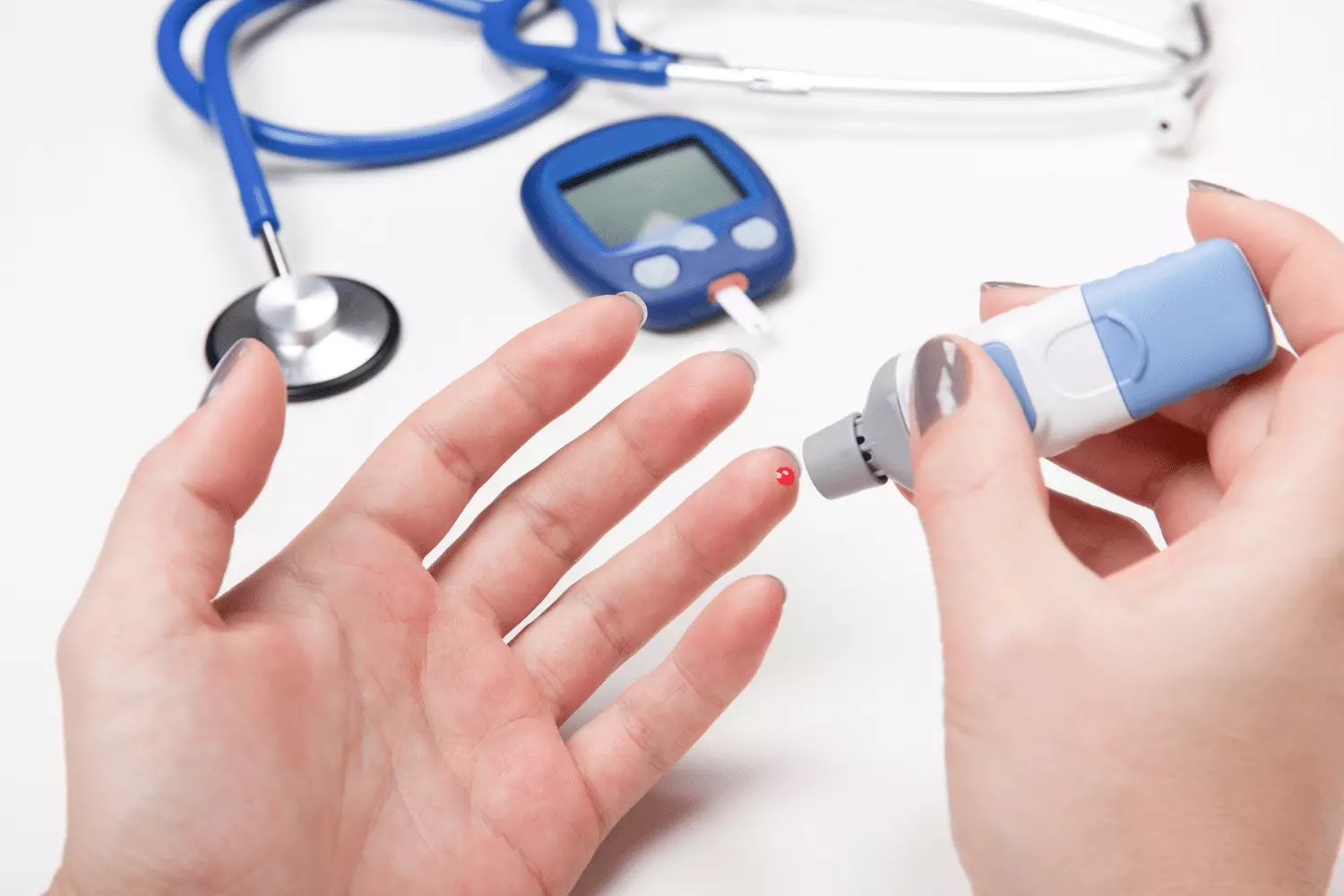Fasting blood glucose test helps diagnose and monitor diabetes
What is Fasting Blood Glucose
Fasting blood glucose is a test that measures the level of sugar in your blood at that moment.
The fasting glucose test is used to help diagnose hypoglycemia
or hyperglycemia. It is also used to monitor your diabetes treatment, along
with the glycated hemoglobin test.
When the Test Is Ordered
The main conditions involved in
glucose testing for diagnosis and follow-up are type 1 and type 2 diabetes, in
which the glucose concentration is elevated. Rarely will your doctor order the
test to diagnose hypoglycemia, but it can happen.
The fasting glucose test may also be ordered by your doctor even if you have no definite symptoms as part of a check-up - especially since diabetes can remain asymptomatic for a long time.
Some signs or conditions that may prompt your doctor to order the fasting
glucose test for further investigation are:
- Urinating several times, a day
- Severe thirst
- Weight loss despite eating more food
- Non-fasting blood glucose higher than 200 mg/dl
- Dehydration
- Dizziness
- Malaise (in children, it may manifest as abdominal pain)
- Intense hunger
- Nausea
- Fainting or coma
- Change of dosage or medication for the treatment of diabetes
- A close relative with diabetes
Pre-Requisites for Testing
There are no contraindications to
the fasting glucose test, but certain precautions are necessary on the day of
the test:
- Fasting for at least 8 hours, with only water allowed
- Children under three years old may fast for 3 hours
- Children between the ages of three and nine may fast for four to five hours only.
- If you are being treated for diabetes, fasting for 12 to 8 hours may not be necessary. And the test needs to be done before the next insulin dose.
- Avoid taking any medications during the fasting period, as they may interfere with the result. To find out whether or not you can stop the medication, talk to your doctor. If you cannot, your doctor will take this into account when reviewing your test results.
- Eating should be routinely maintained until the time you start fasting.
The day before the exam, avoid:
- Vigorous physical exercise
- Ingestion of caffeine in large quantities
- Drinking alcohol
How Fasting Blood Glucose Is
Measured
After the age-oriented fasting
period, a tube of blood is collected in a laboratory by venipuncture. This tube
will be measured on an automated machine to check your blood glucose. It is
usually a quick result, which can be released within 30 minutes or up to 24
hours, depending on the laboratory guidelines.
Recommendations After the Exam
After the test, the patient
should generally eat naturally, without exaggeration. Intense exercise is not
recommended after prolonged fasting.
Possible Complications and Risks
The risks involved with the
fasting glucose test are those inherent in all blood tests, such as bruising or
injury from the brutal collection. The patient may also suffer from dizziness
due to fasting time.
Possible Side Effects
There are no side effects to this
test. You may experience dizziness or other symptoms related to prolonged
fasting - usually a sign of hypoglycemia - but it is a rare condition in
healthy people.
Frequency of Testing
For patients with type 1 or type
2 diabetes, fasting glucose testing is required daily every three months, but
the frequency may vary as needed.
What the Test Results Mean
The test results will indicate
whether or not you have hyperglycemia or hypoglycemia. If the results are
abnormal (above or below the ideal range) but close to the limit, the test can
be done again at a later date scheduled by your doctor. In this way, you can be
sure that the numbers are indeed above or below average.
Reference Values for Blood Glucose
The reference values are between
65 and 99 milligrams of glucose per deciliter of blood (mg/dL).
What Abnormal Results Mean
- Results between 100 mg/dL and 125 mg/dL are considered abnormal near the limit and should be repeated at another time.
- Values above 126 mg/dL (7.2 mmol/L) are highly suggestive of diabetes but should also be repeated at a later time; two values greater than or equal to 126 with at least 8 hours of fasting are diagnostic of diabetes.
- Values above 200 mg/dL are already considered diagnostic for diabetes. However, the patient's other symptoms must be evaluated, and other tests can help, such as the glycosylated hemoglobin and the glycemic curve.
- Values below 65 mg/dL may indicate hypoglycemia and should also be repeated at another time.
Can Pregnant Women Do It?
Pregnant women can and should be
tested for fasting glucose, as it is a routine prenatal procedure and during
pregnancy, and can be done in any week. However, pregnant women have different
values for fasting glucose: the upper limit for suspecting the diagnosis of
diabetes is 85 mg/dL.
If the result is altered, a test
is performed to administer a glycemic curve for 60 and 120 minutes after
ingesting 75g of glucose between the 24th and 28th weeks of gestation. If the
diagnosis of gestational diabetes is confirmed, checks will be done quite
frequently, both in the hospital and at home, using a glucose meter.
A woman with gestational diabetes or who has had diabetes before pregnancy will be asked to maintain fasting blood glucose levels around 95 mg/dl and blood glucose levels one hour after meals around 140 mg/dl. If necessary, she will start insulin treatment.
